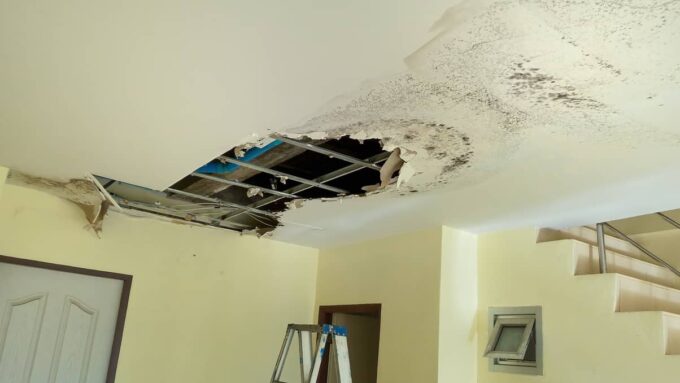There’s nothing more frustrating as a renter than dealing with a rental unit with mold issues. On the other hand, it’s frustrating for a landlord to deal with recurring mold issues and unhappy tenants.
Here’s what you need to know about resolving mold problems for both renters and landlords.
Why Toxic Mold is a Concern
Black toxic mold is concerning because of all the health issues it causes and worsens. Especially susceptible are those suffering from upper respiratory issues including allergies and asthma. If you are exposed to toxic black mold, here are just some of the symptoms you may experience:
- Watery, itchy eyes
- Runny nose
- Sneezing, coughing, wheezing
- Sore throat
- Shortness of breath, breathing difficulties
Mold grows and thrives in damp, humid spaces and is often found in areas like basements and attics. Poor ventilation makes matters even worse.
Certain things can cause mold to grow in previously safe areas which can be anything from an undetected leaky pipe to a flood.
It’s not just the visible mold that’s a problem, but also the tiny mold spores which are present on visible mold. These mold spores easily become airborne, breathed in and cause potential health issues.
Mold can also cause property and structural damage, in addition to the presence of a strong, permeating musty odor.
Landlord Responsibilities
In California, legislation regarding the Toxic Mold Protection Act of 2001 was signed into law. Among disclosures and other things, the act requires all landlords provide their renters with a booklet on mold, which was available for distribution effective January 1, 2022.
A landlord’s first and foremost responsibility is to take the effects of black mold seriously and take steps to properly remediate the mold.
When presenting a lease to a tenant, the landlord should disclose any conditions that may lead to moldy conditions such as previous water damage or dampness, in addition to visible mold or a moldy smell. A landlord should be prepared to honestly answer any questions the tenant has about ventilation, moisture/humidity and plumbing in the building.
The wet, rainy seasons in California and properties near water are susceptible for more humidity and conditions for mold.
As a landlord, take advantage of some of the available tools for controlling humidity and discouraging mold:
- Improve ventilation in areas with stagnant air or spaces lacking proper ventilation.
- Use dehumidifiers to suck up the extra moisture and humidity in the air, helping to keep damp spaces dry.
- Install a hygrometer to help keep tabs on humidity levels in the building, ideally keeping levels at 50% or less. As a bonus, since humidity attracts insects and pests, keeping levels down can help with pest control efforts, too.
- Install exhaust fans in kitchens and bathroom to help remove excess moisture in these two high humidity areas.
- Perform regular inspections, or ask renters to do so, to make sure there aren’t any leaks. Areas to check are under sinks, around faucet seals, toilets and dishwashers. Small undetected leaks can lead to pooling water and the higher risk for mold and other water damage issues.
- Check out the Center for Disease Control and Prevention (CDC) or Environmental Protection Agency (EPA) for further action and recommendations.
What You Can do as a Renter
If the mold problem is minor or even to keep up with things until a professional mold remediation company comes in, here are some steps you can take to keep your space free from lower air quality, property damage and make it healthier:
- Close windows on hot, humid days.
- Use exhaust fans in the bathroom while showering and in the kitchen while cooking.
- Wipe showers/tile/walls (any areas with condensation) down after showering to remove excess moisture.
- Keep bathroom door closed after showering to keep humidity from circulating through your space.
- Avoid leaving wet clothes or towels on beds, furniture or in hampers.
If you’ve been trying to contact your landlord about mold-related issues in your rental with no response, you can reach out to the local building inspections or health department to report the them.
When you signed the lease, the landlord agreed to provide what’s known as an “implied warranty of habitability,” which basically means you are going to get a space that’s suitable to live in without risks to your health and well-being.
Some tenants may choose to withhold rent until the problem is resolved or take care of remediation efforts themselves and deduct costs from the agreed-upon rent, but that is risky. If you choose either of those options, it’s possible for you to face eviction or other legal action.
Keeping yourself healthy and safe is priority one and hopefully, your landlord will agree and take preventative and on-going measures to keep the space free of mold. In some cases, the best course of action to combat inaction is to move to a healthier rental when you can.
Conclusion
Taking aggressive action to prevent conditions for mold growing and thriving in your rental unit or building goes a long way to keep both landlords and renters happy and healthy.
In Sonoma County, call the experts at RCS to address all of your water removal and mold remediation needs.


